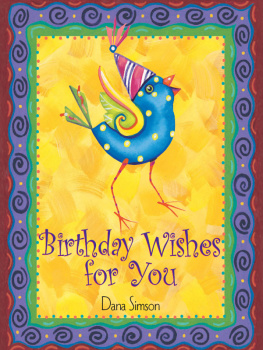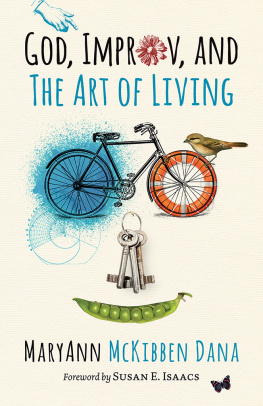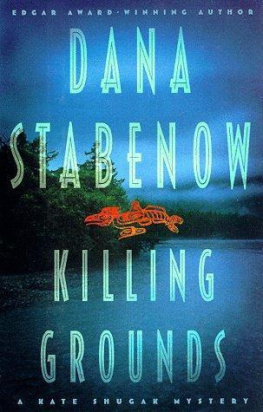Contents
Guide

St. Martin's Paperbacks
The author and publisher have provided this e-book to you for your personal use only. You may not make this e-book publicly available in any way. Copyright infringement is against the law. If you believe the copy of this e-book you are reading infringes on the authors copyright, please notify the publisher at: us.macmillanusa.com/piracy.
CONTENTS
This book is dedicated to my mother.
ACKNOWLEDGMENTS
I would like to wholeheartedly thank the men and women of the Riverside County Sheriffs Department, District Attorneys Office and state Department of Justice who investigate, track and try perpetrators of horrifyingly senseless murders. I thank Riverside County Sheriffs Department Det. Joe Greco for his investigative skills and soul-searching candor in putting a human face on the daunting prospect of finding a most unusual serial killer; former Riverside County Sheriffs Department Det. Chris Antoniadas for his selfless dedication to police work, his impressive investigative expertise and true grit; Riverside County Deputy District Attorney Rich Bentley for his lawyerly expertise; Riverside County Sheriffs Department Inv. Andre OHarra for his expertise on jail life. I also thank Riverside County Sheriffs Department Det. James McElvain, Det. Rene Rodriguez and Officer Wyatt McElvain for their hard work. I would like to express my undying appreciation for Riverside County District Attorney Inv. George Hudson for his assistance and support on this project. I thank criminalists Marianne Stam, Ric Cooksie and photographer Jim Potts.
I thank and appreciate my 6 a.m. Happy Hour workout buddies for keeping our souls and spirits balanced and our heart rates soaring; my West Coast Swing dance buddies for understanding when I disappeared during the last months final push; ballet teachers Gilma Bustillo, Charles and Phillip Fuller of Le Studio for their kind and thoughtful guidance; and ballet instructor Joseph Nugent of the Pasadena Dance Academy and Theater, for his unique blend of humor and barre work.
Most of all, I thank my friends and family for their moral support and loving enthusiasm.
AUTHORS NOTE
To Die For is a work of nonfiction. The events depicted in this book are true. Much of the dialogue has been reconstructed from personal interviews, police records, and courts documents. Additionally, some scenes have been dramatically recreated in order to portray most effectively the personalities of the individuals involved in this story and the atmosphere surrounding the events depicted in this book. The names of the following individuals are pseudonyms: Tom, Darlene, Joanie Fulton, Jason Wilkins, Jim Wilkins, Kellie Jacobs, Jean Smothers, Charles Van Owen, Linda Dorsey, Julie Bennett, Lisa Thompkins, Laureen Johanson, Sharon Callendar, Rhonda, Carrie Ann, Michael Carpenter, Yvonne, Rob Beaudry, Chris Dodson, Evan Campbell, Cindy Anderson and Marion Snyder.
WHAT DANA DID
June Roberts, 66, was strapped to a chair in her home, strangled with a telephone cord, and bludgeoned in the face with a wine bottle. As Dana Sue Gray went about her business, her boyfriends five-year-old son waited in the front seat of her Cadillac parked out front.
Dorinda Hawkins, 57, was strangled and left for dead in the antique store where she workedbut Hawkins survived to tell of her blonde, female attacker. According to Dana Sue Gray, Hawkins was being condescending to her. Said Gray, I felt sick to my stomach. I wanted to vomit. I wanted her to die.
Eighty-seven-year-old Dora Beebe opened her door to a stranger asking for directions. That stranger was Dana Sue Gray, who proceeded to strangle her with a phone cord and bash her so hard with an iron that it dented. Gray claimed to have been angered when Beebe opened her door and allegedly complained, I dont have time for this.
PROLOGUE
Dana Sue Gray is a rarity, even among the small sorority of female serial killers dwarfed by dime-a-dozen male serial killers. There are 36 documented female serial killers whose murderous careers spanned the late 19th and 20th centuries. A serial killer is defined by the FBI as one who commits a murder in one location followed by a period of time where they live a relatively normal life without criminal activity, followed by another murder in another location and another crime-free period. This kind of killer is distinguishable from from someone who commits multiple murder or mass murder in a single event or in a killing spree, which include multiple incidents over a more compressed period of time.
Female serial killers typically kill their partners, children, or people under their care, and the overwhelming majority do so at a distance, with poison or guns. Dana is highly unusual by her choice of victim and the gruesomely intimate in-your-face method of ending their lives by using her hands and a phone cord to strangle, then a handy tool to bludgeon. There are only two known serial killers who chose strangulation as a primary means to dispatch their victims: one of them killed her own children for profit, and the other killed other peoples children. According to Murder Most Rare (Kelleher), there are no known cases in which a woman strangled her victims both with a ligature and manually, then finished them off by bludgeoning.
The other unique aspect of Grays crimes is her choice of victims. Kelleher categorized serial killers by motive, such as black widows, killers who murder for profit, angels of death and those who are clearly mentally disturbed. Women overwhelmingly kill their husbands or boyfriends, their children, other peoples children or people for whom they are caring. Once they have a pattern, or a modus operandi, they dont typically digress. There are no other known young serial killers who target elderly women. In the lexicon of serial murder, Dana was a switch-hitter. Two of her victims were those with whom she had a remote family bond, and the other two were complete strangers.
* * *
What makes Dana rare is her method of killingusing far more force than was necessary to end the lives of frail and elderly victims in two cases, and a woman 30 years older than her in another. Dr. Patricia Kirby, a psychologist, once a homicide detective for the Baltimore police and a former FBI profiler, said that if Dana truly wanted credit cards, she would have found a way to obtain them without harming anyone. Kirby suggests that it was the act of killing and, in particular, the act of struggling with her victims that was her goal. Dana sought lethal excitement much the same way she sought excitement by leaping out of airplanes, windsurfing and other thrill sports. Lunch, beauty-shop pampering and shopping afterward was the celebration of the kill.
Given the extreme violence that Dana exhibited in murdering her victims, Kirby and others have wondered when Danas killing spree truly began and question the relationship of the loss of her nursing job with the start of her killing spree. Hospital authorities for each of the institutions that employed Dana insist there were no unusual deaths during the time that Dana was employed there.
CHAPTER ONE
WEDNESDAY, FEBRUARY 16, 1994, 9 A.M.
The phone was ringing. No one knew Norma was dead. But there she sat, upright in her comfy gold armchair for two days, an oversized, wood-handled utility knife buried to the hilt in her neck, the matching fillet knife in her chest. Other than one broken, pearly pink fingernail on her right hand, gracefully draped over the arm rest, she bore no other marks. Norma Davis, in a fleeting glance, looked no more sinister than an 86-year-old heart patient napping in front of the television, head sagging to one side, with a brown, fringed afghan covering the flowered-print blue slipper she wore on her foot. The coagulated pool of blood had seeped up around the wounds, darkening the animal designs on her black sweater.













